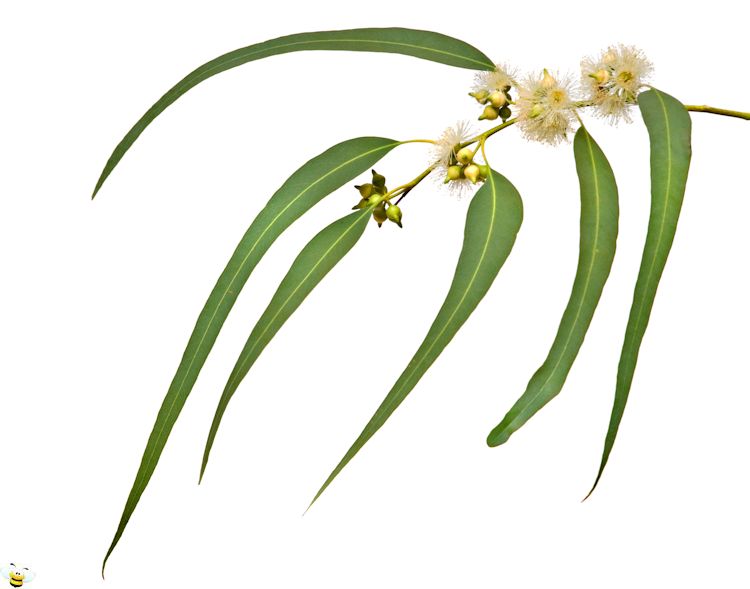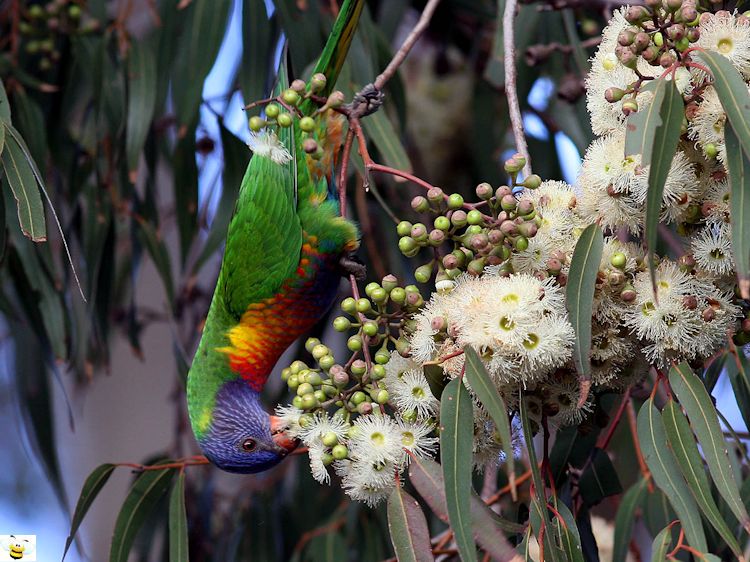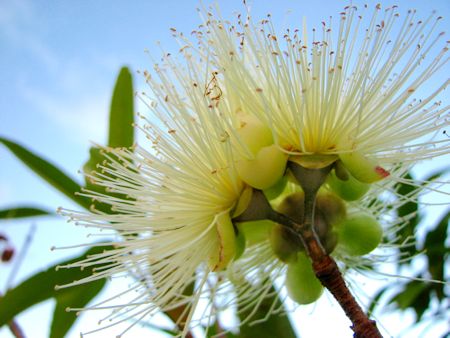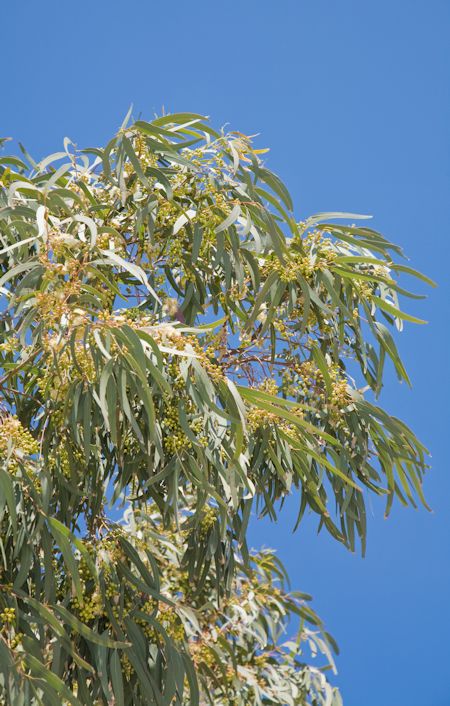Eucalyptus Honey Will
Delight You...
Yes it’s true... eucalyptus honey may grow on you about as fast as the eucalyptus tree grows and it’s one of the fastest growing trees in the world!
When you become more aware of the unique nature of this plant and the nectar the honey bees collect from these exquisite flowers you will appreciate the value of this honey more deeply. You may decide to simply enjoy it for its topical skin uses or discover that the medicinal or camphor like tones in the flavor can be a compliment to your black herbal teas and not something to avoid... at least not in all cases.
Eucalyptus leaves can be steam distilled to extract the oil that is then used in many pharmaceutical, antiseptic, repellent, flavoring, fragrance, and industrial uses. Eucalyptus oil contains up to 90% eucalyptol compounds... an organic ether compound that gives this essential oil many of its unique and healthy characteristics. These characteristics include an antiseptic effect and soothing menthol like vapor making it popular in many personal hygiene products… imparting a fresh and clean taste, aroma, and feel!
Eucalyptus honey naturally has traces of eucalyptol compounds that have been carried in the nectar by the honey bee from the flower to hive. The slight menthol or camphor like experience that some people dislike in this honey is a result of eucalyptol compounds found in the eucalyptus nectar. However... hints of this compound in the honey are also what give this honey a unique health edge over the benefits of many other honey varieties.
There are so many species of eucalyptus worldwide that flavor, aroma, and texture of this honey experience can vary a ton. You may even find a honey within the eucalyptus family named specifically for the type of tree it was collected from such as... Jarrah, Blue Gum, Spotted Gum, or Iron Bark Eucalyptus.

WHIZZ NOTE: (mmmm...) Hi... hold on while I (mmmmhuoo...) while I finish my eucalyptus honey message! OK, now... where were we... oh yes...
Flavor... is bold and slightly herbal with a butterscotch quality and spicy, cooling, menthol like aftertaste. Not as sweet as average honeys.
Color... is light amber to medium dark red.
Storage... varies widely but typically granulates moderately quickly into thin crystals. (Unusual considering this is a tree nectar source and tree nectar honeys usually have the best storage properties.)

Plant:
There are over 700 species of eucalyptus with most of them native to Australia. Over the years they have been cultivated all around the world in any location with tropical or temperate climates. Most eucalypts do not tolerate frost and are evergreen. They range in size from low shrubs to very large trees up to 200 feet tall!
The eucalyptus leaf has a broad lanceolate shape. This means that they have the general shape of a lance... being longer than it is wide with the widest part closer to the stem than the tip. Running down the middle of this fleshy, green-gray leaf is a very prominent central vein.
Bloom:
There are two types of flowering eucalyptus... one flowering once a year during a specific season and another flowering all year round. This is important for you to know if you are keeping bees in a location that has potential eucalypt nectar sources. They may provide nectar flows at times of the year when other common nectar sources are not flowering.
Eucalyptus flowers do not have petals but are still quite showy. Each flower has a cluster of rather long stamens supporting little yellow anthers. The color of the stamen filament is the general color of the flower as they are the most visible parts. This color can range from white, cream, pink, yellow, and red depending on the species.
This honey plant family is so large and diverse that you can find some kinds of them blooming at any given time of the year. You will just have to get familiar with the local species available to you and your honey bees and learn to be ready for this nectar flow if you are interested in collecting it.
Location:
As already mentioned this plant is found all around the world in nearly every tropical or temperate climate. Almost every place it is found it has become known as a valuable honey plant. Eucalyptus honey on the world market is supplied by countries like Australia and South Africa.
California is king when it comes to this honey in the USA. Some variety of the 500 different species found in California will be blooming during every month of the year. However, the best nectar flows in this region will be during the winter and spring months.
Honey and Pollen Potential:
Honey bees are very much attracted to eucalyptus flowers and the abundant nectar flow they typically provide. These flowers can produce so much nectar it will collect in the cup shaped base of the flower and it can be dumped out. You can see in the following picture that it does not take a small honey bee to collect this nectar... a lorikeet has decided to help himself to some of the sweet natural goodness!
As with any honey plant though... it seems that local conditions like the type of soil, climate change, and daily weather conditions can affect the local nectar flow. In the case of the Eucalypts you will find that the trees age will also play a significant part in the quantity of available nectar. Some species will begin blooming under ideal conditions by the time they are two to three years old... however research has confirmed that aged old eucalypt forests can produce as much as ten times the nectar that young plantations will produce.
Never the less... it is possible for a bee hive on an acre of trees to produce up to 100-120 lbs of honey with a year to year average of at least 45 lbs of eucalyptus honey.
In addition... many Eucalypt species are prolific pollen producers and a strong honey bee hive may produce as much as 4-6 lbs of surplus pollen for the beekeeper to harvest. This pollen is typically a light hemp green color but really it depends on the species.
Honey bees also positively affect the pollination of the eucalyptus flowers. If they are being grown for seed propagation... the farmer will benefit in increased seed production by keeping bees working in his trees during the flowering season.

If you think you don’t like Eucalyptus Honey... don’t give up on it yet...
It has lots of potential to be a positive addition to a healthy lifestyle. There are so many variations even within this family of honey you will probably find a source for a variety you enjoy.
You also may find just the right pairing of foods that its unique flavor will complement your flavor experience... Have fun exploring!
Honey › Good Honey Plants › Eucalyptus Honey





